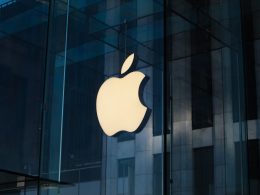Hon Hai Precision Industry Co., also known as Foxconn, faced a disappointing profit performance despite the resurgence of iPhone sales. As Apple celebrated the success of its latest iPhone lineup, Hon Hai grappled with missed opportunities and ongoing challenges. In this article, we delve into the factors that contributed to Hon Hai’s profit disappointment, assess the implications for its partnership with Apple, and explore the company’s strategies to overcome these obstacles.
Profit Shortfall Amid Apple’s Triumph:
While Apple experienced a strong comeback with its latest iPhone models, Hon Hai failed to capitalize on the wave of success. The company’s profit fell short of expectations, leaving investors and analysts concerned. Despite being a crucial player in Apple’s supply chain, Hon Hai struggled to translate Apple’s success into its own financial performance.
Escalating Production Costs:
One significant factor contributing to Hon Hai’s profit disappointment is the escalating production costs. As an integral part of Apple’s manufacturing ecosystem, Hon Hai faces the challenge of maintaining profitability while coping with rising expenses. Factors such as labor costs, raw materials, and logistics have put immense pressure on the company’s profit margins, making it difficult to fully benefit from the increased demand for iPhones.
Supply Chain Hurdles:
Hon Hai’s profit woes have also been amplified by disruptions in its supply chain. The intricate network of suppliers and logistics partners is vulnerable to various disruptions, including global events, geopolitical tensions, and unforeseen crises. These disruptions have hindered Hon Hai’s ability to fulfill production targets efficiently, leading to missed opportunities and impacting its financial performance.
Operational Complexities:
The operational complexities involved in manufacturing Apple devices have presented further challenges for Hon Hai. As demand for iPhones surged, Hon Hai encountered hurdles in ensuring seamless production processes and meeting customer expectations. Operational inefficiencies and bottlenecks can impede the company’s ability to capitalize on Apple’s strong comeback, highlighting the need for strategic improvements in its operations.
Implications for the Apple Partnership:
Hon Hai’s profit disappointment raises questions about the long-term sustainability of its partnership with Apple. As one of Apple’s key manufacturing partners, Hon Hai plays a crucial role in delivering high-quality products at scale. However, the company’s ongoing challenges may prompt Apple to reevaluate its partnership and consider diversifying its manufacturing options.
Navigating the Competitive Landscape:
Hon Hai’s struggles reflect the broader challenges faced by players in the electronics manufacturing industry. The highly competitive landscape, rapid technological advancements, and evolving consumer preferences require companies to continuously innovate and adapt. Overcoming these challenges will demand Hon Hai’s commitment to operational excellence, cost optimization, and strategic partnerships.
Conclusion:
Despite the strong comeback of Apple’s iPhone lineup, Hon Hai’s profit disappointment highlights the company’s struggle to fully capitalize on the success. Escalating production costs, supply chain disruptions, and operational complexities have hindered Hon Hai’s ability to translate Apple’s triumph into its own financial performance. As the partnership between Hon Hai and Apple evolves, the challenges faced by Hon Hai underscore the need for strategic improvements, cost management, and operational efficiency. Overcoming these obstacles will be crucial for Hon Hai’s future profitability and its continued collaboration with Apple in the ever-changing landscape of electronics manufacturing.












